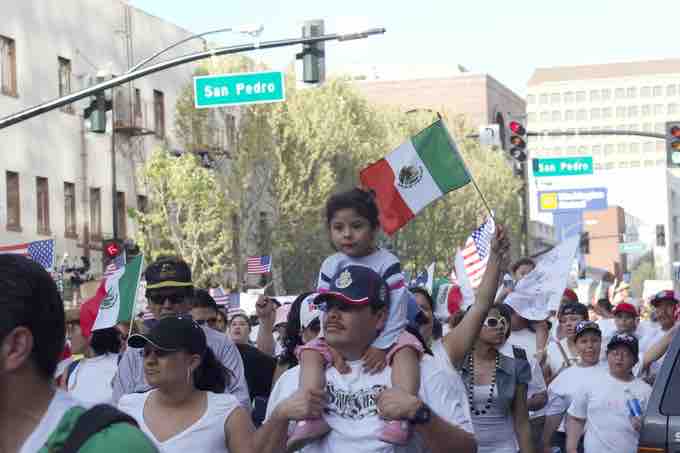History
Immigration is the movement of people from one country to a country in which they are not native. In the United States, immigration has a long and complex history. It has long been a source of population growth as well as cultural, social, and political change.
In the first two centuries of the United States' history, new immigrants were primarily north European, African, and Caribbean. Europeans immigrated primarily for economic opportunity, though some groups moved in pursuit of religious freedom or political asylum. Virtually all immigration from Africa and the Caribbean was the result of slavery — the movement of Africans and Caribbean Islanders from their native countries was entirely involuntary.
By the mid-1800s, increasing numbers of southern and eastern Europeans were immigrating to the United States. Many new groups were met with xenophobia. For example, in the second half of the 1800s, the Irish population in the U.S. exploded, and anti-Irish sentiment resulted in a plethora of discriminatory practices in housing, employment, and governance.
For much of the twentieth century, immigration was severely restricted by legislation with an isolationist philosophy. It was not until the passage of the Immigration and Nationality Act of 1965 that significant numbers of immigrants were once again allowed to enter the U.S. The Immigration and Nationality Act reversed laws that limited the number of immigrants who could enter from any given country, and instead put in place policies that encouraged the immigration of skilled workers and family members of U.S. citizens.
Contemporary Debates
At present, the two largest immigrant groups in the United States are Latinos and Asian-Americans. While there is general political debate surrounding immigration, the bulk focuses on Latinos. This trend is largely due to the high socio-economic status of Asian immigrants — compared to other groups, Asian immigrants tend to be well-educated, and second-generation Asian-Americans immigrants tend to have high incomes and educational attainment. Latino immigrants, on the other hand, comprise a poorer, less-educated population. Consequently, they are more vulnerable to civil rights violations and lack of legal protection.
All immigrants are affected by certain civil rights issues, though Latinos may be more vulnerable than other groups. Central issues include the low enforcement of labor laws with regards to immigrant workers who are subject to dangerous or exploitative conditions; lack of due process in the courts for residents who entered the country illegally; debates about whether languages other than English should be taught in public schools and used in government documents; and debates about whether children who entered the country illegally can be prosecuted and deported. The Dream Act is an example of recently proposed legislation that would allow children born to parents who are illegally in the U.S. to attend public universities and become citizens .Although the Dream Act has not passed as federal legislation, a California version was passed in 2011. The California DREAM (Development, Relief, and Education for Alien Minors) Act is a package of California state laws that allow children who were brought into the US under the age of 16 without proper visas/immigration documentation who have attended school on a regular basis and otherwise meet in-state tuition and GPA requirements to apply for student financial aid benefits.

Mexican-American Rights March
Mexican-American immigrants have organized many political demonstrations to protest the exploitation of workers, discrimination in education and employment, and heavy-handed criminal justice enforcement against illegal immigrants.
While illegal immigration is the most controversial issue in American politics, immigrants who enter the country legally also face civil rights challenges. Discrimination in housing, employment, and education is legally prohibited, but continues to impact many immigrants, especially those who may be vulnerable due to a language barrier or their economic status.